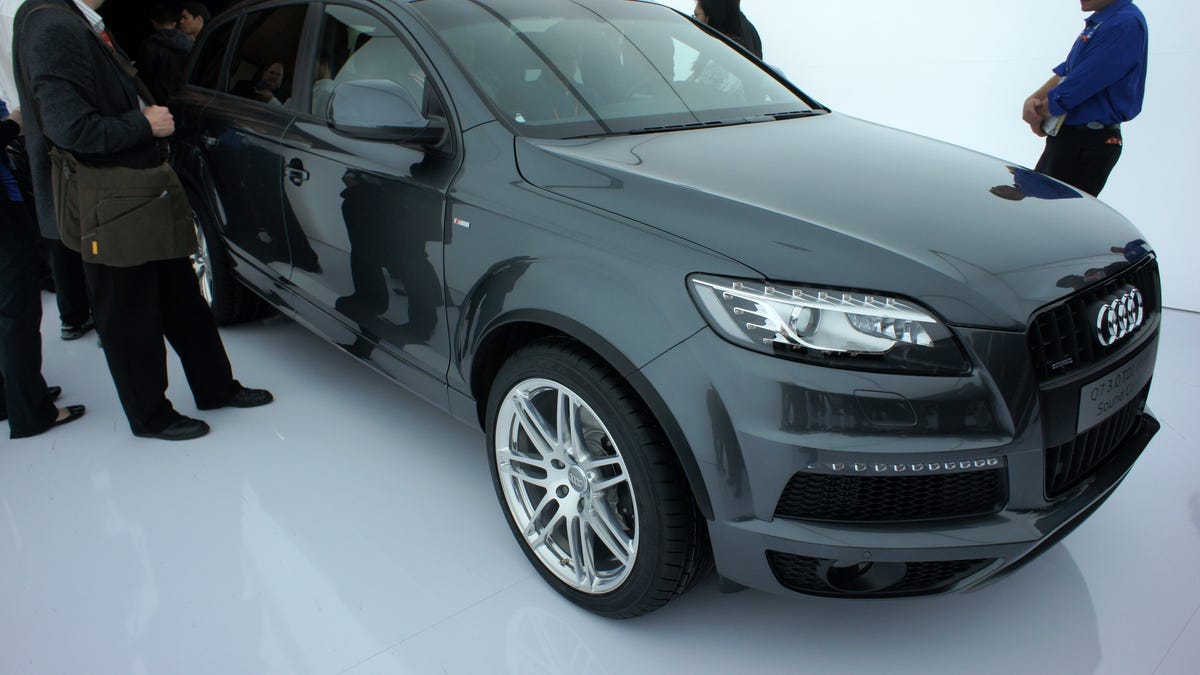Listening in on Audi 3D audio
Audi brought a Q7 SUV to CES 2013 to showcase its partnership with Bang & Olufsen and The Fraunhofer Institute to develop what it calls 3D audio in the car.

LAS VEGAS--Yesterday CNET reported on Audi's announcement of its concept Q7 featuring 3D Audio at CES 2013. Today I got to listen to it.
How do you describe an audio experience? Inside the Q7, the first word that came to my mind was "bigger." In standard, 2D mode, the audio sounded excellent, mostly due to the Bang & Olufsen hardware making up this system. Having driven to many Bang & Olufsen-equipped cars, I did not detect any degradation in the standard audio.
However, when I switched the stereo to 3D mode, the audio seemed to rise up across the windshield. It was not a matter of moving the soundstage up higher, but more like a curtain opening up, revealing musicians that had been hidden in the orchestra pit. A Bang & Olufsen spokesperson described the effect as adding emotion to the music.
Listening to a track with a female singer playing acoustic guitar, the switch from 2D to 3D initially made her voice sound like a chorus, but once my ears adjusted, I realized the system was reproducing more tones from her vocals than it had previously. On a track with more instruments, it made me feel more like I was standing in front of a stage listening to a band than any other car audio system I've heard to date.
This 3D audio technology comes to Audi courtesy of Bang & Olufsen and The Fraunhofer Institute, the German organization that came up with MP3 and AAC audio formats.
The Fraunhofer Institute provided the algorithm, which it had been developing for years, programmed into the system's DSP. This algorithm takes a typical two-channel audio source and analyzes the sound in real time. Instead of merely understanding frequencies, it can identify a vocal, a guitar, other instruments, and even the background sound, from a live recording, for example.
It organizes the sounds it identifies and then distributes them throughout the audio system. In the Q7, Bang & Olufsen provided 24 speakers and a 24-channel, 1,800-watt amp. All these channels let the algorithm effectively distribute the audio to create the soundscape. Vocals would go through the channels that would put the singer front and center to the car's passengers, while additional speakers higher up on the car's A pillars add sounds that might have been in the background on the original source or echoes of instruments reflected from higher up.
Although accomplishing this processing in real time seems impressive, a spokesperson for The Fraunhofer Institute said the algorithm could be installed on any high-end DSP.
Audi showed the system in a Q7, and says it will have 3D audio as a production option in 2014, although it will not specify in which models at this time. Bang & Olufsen says the system would most likely be the next generation of the Bang & Olufsen audio option already available in Audi cars. It would certainly give new meaning to the term "premium audio."

